Genomic analysis of the TRIM family reveals two groups of genes with distinct evolutionary properties
- PMID: 18673550
- PMCID: PMC2533329
- DOI: 10.1186/1471-2148-8-225
Genomic analysis of the TRIM family reveals two groups of genes with distinct evolutionary properties
Abstract
Background: The TRIM family is composed of multi-domain proteins that display the Tripartite Motif (RING, B-box and Coiled-coil) that can be associated with a C-terminal domain. TRIM genes are involved in ubiquitylation and are implicated in a variety of human pathologies, from Mendelian inherited disorders to cancer, and are also involved in cellular response to viral infection.
Results: Here we defined the entire human TRIM family and also identified the TRIM sets of other vertebrate (mouse, rat, dog, cow, chicken, tetraodon, and zebrafish) and invertebrate species (fruitfly, worm, and ciona). By means of comparative analyses we found that, after assembly of the tripartite motif in an early metazoan ancestor, few types of C-terminal domains have been associated with this module during evolution and that an important increase in TRIM number occurred in vertebrate species concomitantly with the addition of the SPRY domain. We showed that the human TRIM family is split into two groups that differ in domain structure, genomic organization and evolutionary properties. Group 1 members present a variety of C-terminal domains, are highly conserved among vertebrate species, and are represented in invertebrates. Conversely, group 2 is absent in invertebrates, is characterized by the presence of a C-terminal SPRY domain and presents unique sets of genes in each mammal examined. The generation of independent sets of group 2 genes is also evident in the other vertebrate species. Comparing the murine and human TRIM sets, we found that group 1 and 2 genes evolve at different speeds and are subject to different selective pressures.
Conclusion: We found that the TRIM family is composed of two groups of genes with distinct evolutionary properties. Group 2 is younger, highly dynamic, and might act as a reservoir to develop novel TRIM functions. Since some group 2 genes are implicated in innate immune response, their evolutionary features may account for species-specific battles against viral infection.
Figures


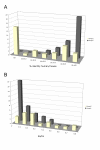
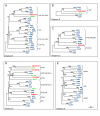
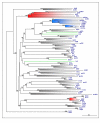
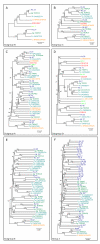
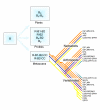
References
Publication types
MeSH terms
Substances
Grants and funding
LinkOut - more resources
Full Text Sources
Molecular Biology Databases

